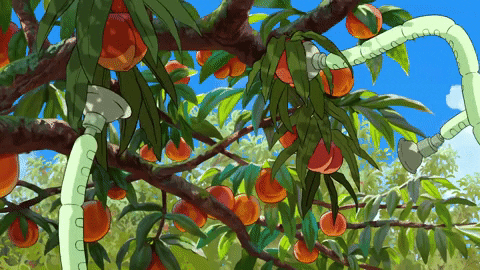Explain Like I'm Five: Endowments
As you tuck your creative practice in for the night, the moment you’ve been dreading for years finally arrives. “Where do grants come from?” it asks, wide-eyed and full of hope. “While one-time grants can come from anywhere, like a gift from Oma, the big grants that reappear year after year are usually funded by an endowment,” you say, wishing you could end the talk there. Internally, you’re debating whether to start with the bright side of endowment funds, like free tuition for medical students in the Bronx, or start in the beginning, where white folks gifted each other other people’s land (“Charles, lad, you must have this forest! You simply must!”).
If you’re anything like me, you didn’t go into art because you have a burning passion for long-term financial planning and sustainability. But demystifying how endowments work can give working artists like you and me a deeper, underground perspective on the arts funding landscape (the worm’s eye view, if you will), and unlock tools for navigating and advocating from within this thorny, rocky soil.
What's an endowment?
An endowment is like a garden, where the various plants (a diverse portfolio of assets) grow every year, and only the fruits (a small percent of the endowment’s total value) are harvested annually (usually competitively, as grants) to support art, research, or other do-good-ing. Philanthropies, a category that includes most grant-making foundations, are actually required by federal law to pay out 5% of their endowment’s value every year for charitable purposes at the risk of losing their tax-exempt status. Since some seasons are drier than others (economically speaking), the garden can be more fruitful one year, less fruitful the next. This helps explain why some years, finding grant funding for your artistic practice can feel even more competitive than usual.
The bright side of endowments
Whereas other sources of funding—like donations, ticket sales, or federal support—are fickle and fluctuate, an endowment is sustainable and self-renewing. This forever-ness provides a stable, predictable source of funding for the institution itself, or for particular programs the institution runs, like a beloved annual summer residency. As long as you don’t let the well (principal) run dry, the institution will always have a consistent funding stream to dip into and deliver on their mission. At their best, endowments ensure that future artists can drink and grow from the same water as today’s artists. In theory, the stability would also enable artists and orgs to undertake more ambitious and long-term projects, while leaving room for creative risks and experimentation along the way.
The not-so-nice bits
Of course, the bright side rarely tells the whole story. The very existence of endowments relies on some premises that are very much worth questioning:
|
|
the Ruling Class Premise |
|
|
the Hungry Caterpillar Premise |
How artists keep the garden humming
After taking the worm’s eye view and learning about the underground world of nonprofit funding, an artist is bound to feel pretty small and powerless. But the truth is that this whole ecosystem would quickly collapse without artists, because we are the ones pollinating the garden with our creative work. When institutions put out a call, artists submit innovative ideas and write socially impactful proposals in order to receive funding. It might feel like the balance of power is in the hands of institutions with endowments, because they decide which projects or missions get funded. But in reality, these institutions need to prove, year after year, that they benefit the public in some way. And it’s worth remembering that they prove their worth by showing off the impact artists’ work has on the world. Like bees and other pollinators, artists keep the garden growing and bearing fruits, and are a force to be reckoned with.
Planting seeds
If nothing else, we hope this introduction to endowments and arts funding planted some seeds in your mind. For example, “should Charles get to keep a forest that was never his?” or, “can I open a savings account for my arts collective, and ask donors to fund it?” From the bright side of endowments to the not-so-nice bits, we’re skeptical of just about everything in the arts industry—except the power of bees, nature metaphors, and working artists.
For hungry caterpillars
- Understanding Endowments | Investopedia
- Endowments Show Strong Gains—and Provoke Controversy |
The Chronicle of Philanthropy - Endowments and Arts Organizations | Grantmakers in the Arts
- The Grasshopper or the Ant: a Review of Endowment Giving Policy Options | Doris Duke Foundation
About Vicky Blume
Vicky Blume lives in Austin, Texas with her cat and partner. She co-leads the unparalleled External Relations team here at Fractured Atlas. In her artistic practice, Blume builds interactive websites, animations, and installations that offer calming and consensual alternatives to the Attention Economy.


